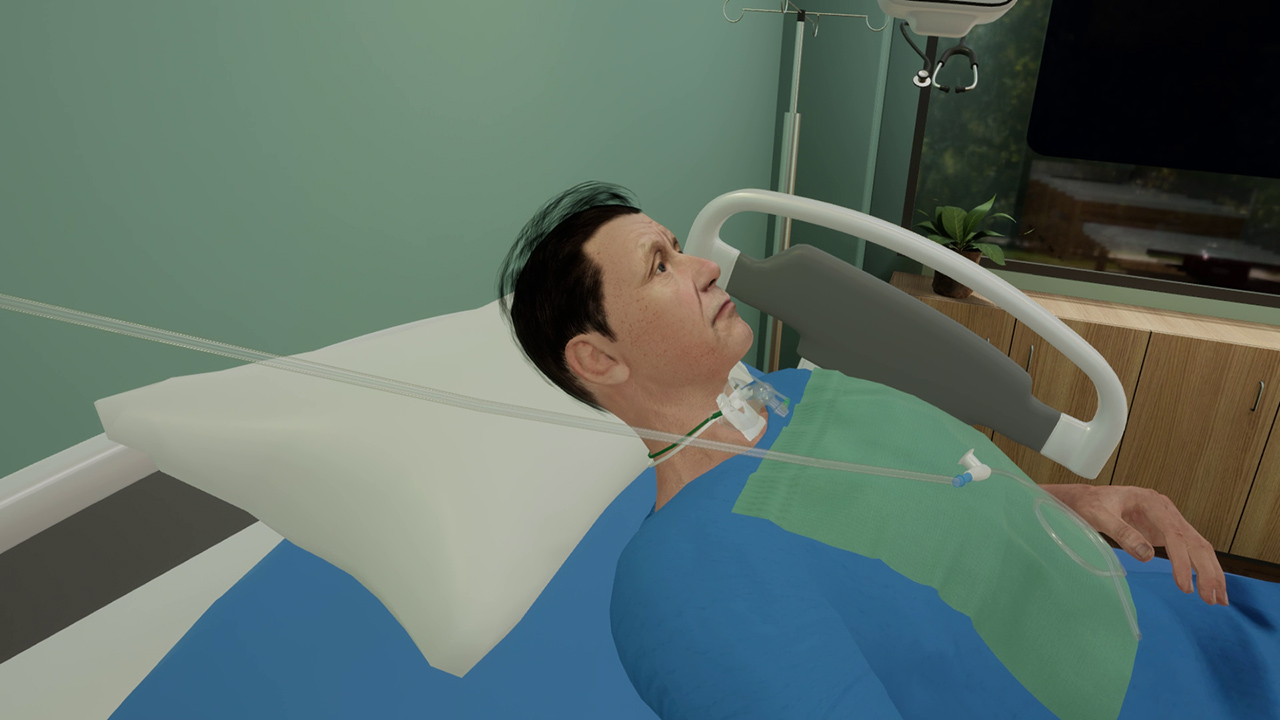Tracheostomy Care
Fifty-seven-year-old Patrick has had to undergo a tracheostomy procedure due to an infection in his epiglottis. As a nurse, your responsibility is to perform post-operative tracheostomy care procedures.
Performing a tracheostomy is a major surgical procedure and carries with it significant risks and possibilities of complications. The success of the surgery largely depends upon the post-procedural care and this is where the role of caregiving nurses becomes crucial.
This VR session provides learners practice in performing tracheostomy care regimes smoothly and skillfully.
- Explain tracheostomy care procedure to a virtual patient
- Demonstrate correct procedure for closed and open suctioning of a tracheostomy patient
- Demonstrate sterile technique in setting up sterile field and performing tracheostomy care
- Demonstrate setting up oxygen on a tracheostomy patient
- Explain aftercare instructions to patient
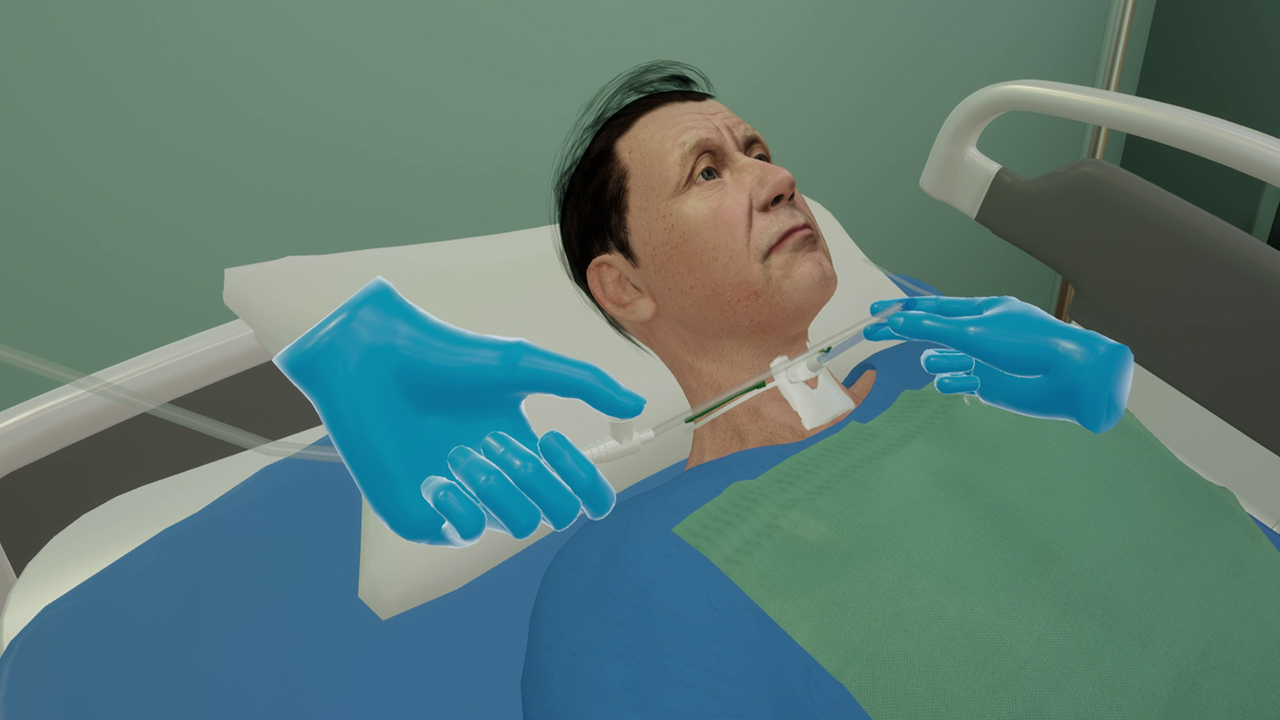
- Intensive Care Society. (2014). “Standards for the care of adult patients with a temporary tracheostomy; Standards and guidelines”.
- Morris, L. L., et al. (2013). Tracheostomy care and complications in the intensive care unit. Critical Care Nurse, 33(5), 18–30.
Customize Your Program
Get rid of the editor. Adopt in-VR customization.
MedVR Education is bringing to you in-VR customization that will enable you to customize your procedural simulations by making selections from a range of feature choices.
- Select patient from a diverse background
- Choose preferred virtual environment
- Select equipment used in the procedure
- Modify difficulty level of the assessment mode
- …..many more to come
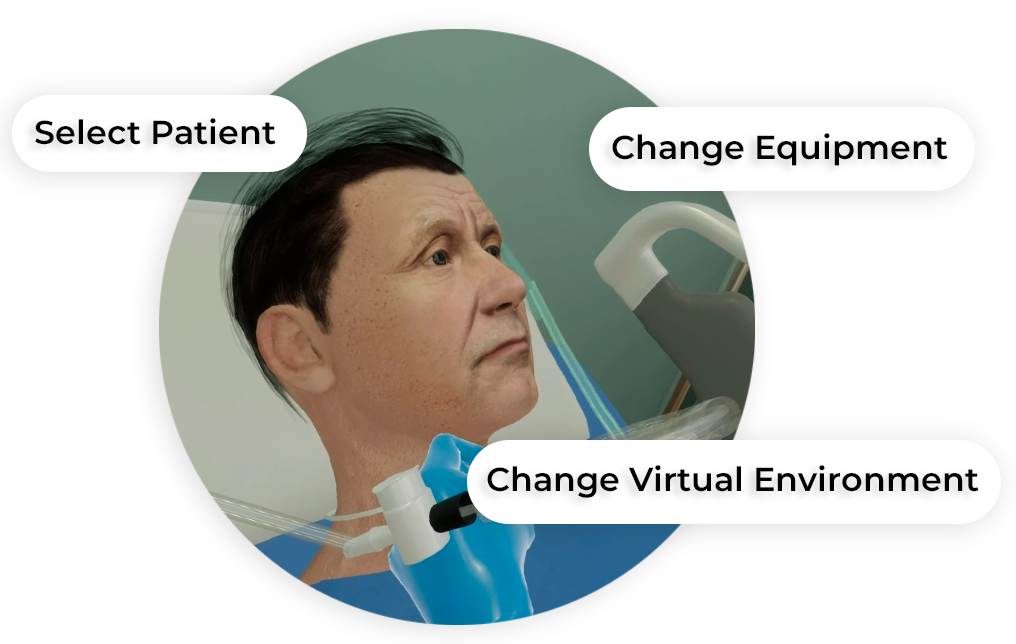
 Physics-Based Interaction
Physics-Based Interaction
Core Skills Training
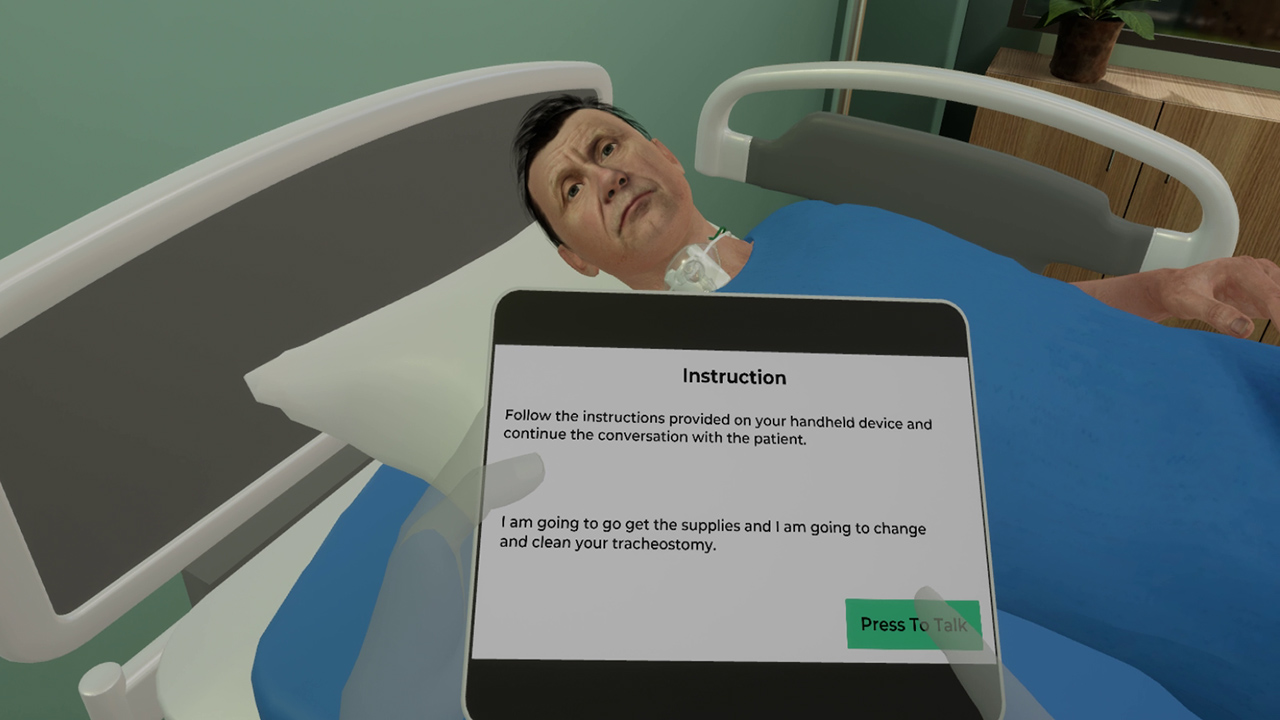
Patient Preparation
To get a patient to co-operate it is important to communicate and inform about the procedure. In this Patient Preparation module, learners practice conversing and communicating with virtual patients. Learners will also gather the required material and equipment needed for the procedure. These are provided in the form of affordances which will assist the learners in completing their tasks. All affordances present physics-based interactions to give a realistic experience.
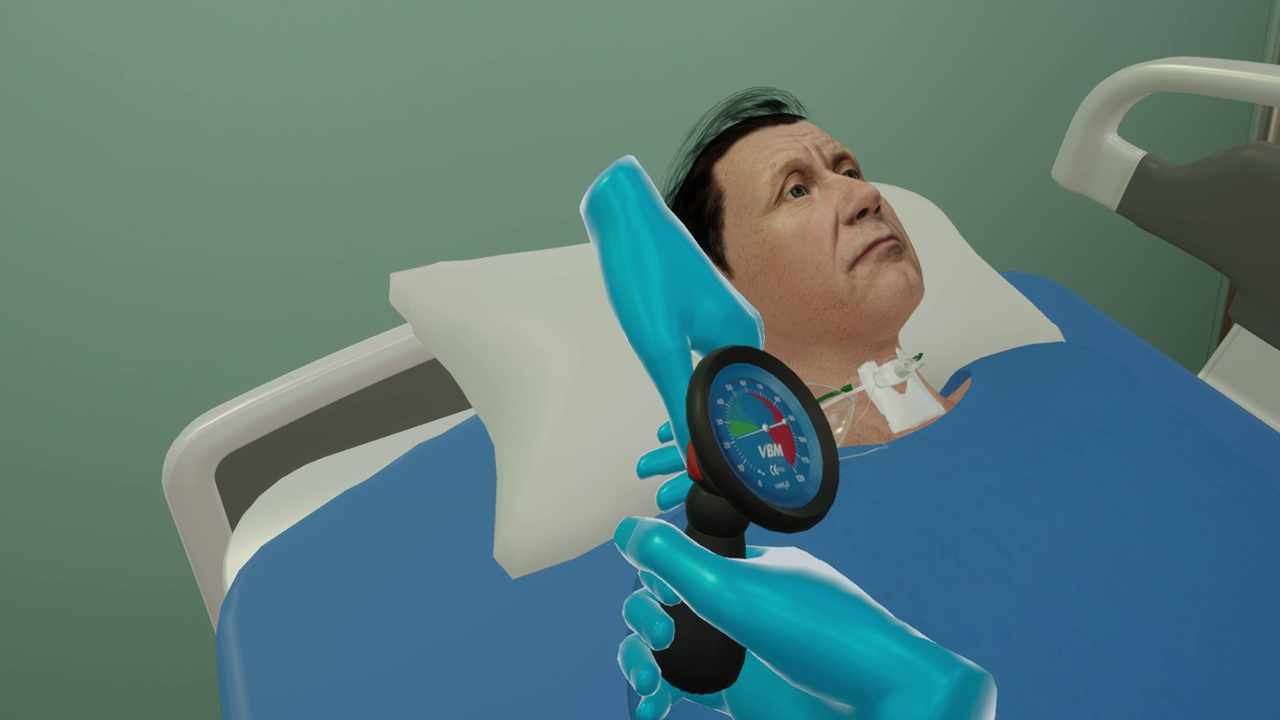
Cuff Inflation and Deflation
Proper placement of the cuff is essential for the tracheostomy tube to function properly. A dislocated tube can lead to aspiration and further complications. Not only is it important to keep the cuff in place but also to maintain just the right amount of pressure in the cuff, recommended levels being 20mmHg to 25mmHg. This module on Cuff Inflation and Deflation provides learners practice in first deflating the cuff and then inflating it using a manometer. Detailed instructions and availability of required affordances provides a thorough practice session.

Open Suctioning
Suctioning is an important procedure to maintain the integrity of the tracheostomy tube, avoid blockages, and keep the tube clear for comfortable breathing. For patients not requiring a constant source of oxygen supply the open suctioning method is used. This virtual scenario consists of a virtual patient, affordances like suctions catheter kit and suction machine among other required equipment. With detailed instructions and guidance, users can practice the skill to perfection.
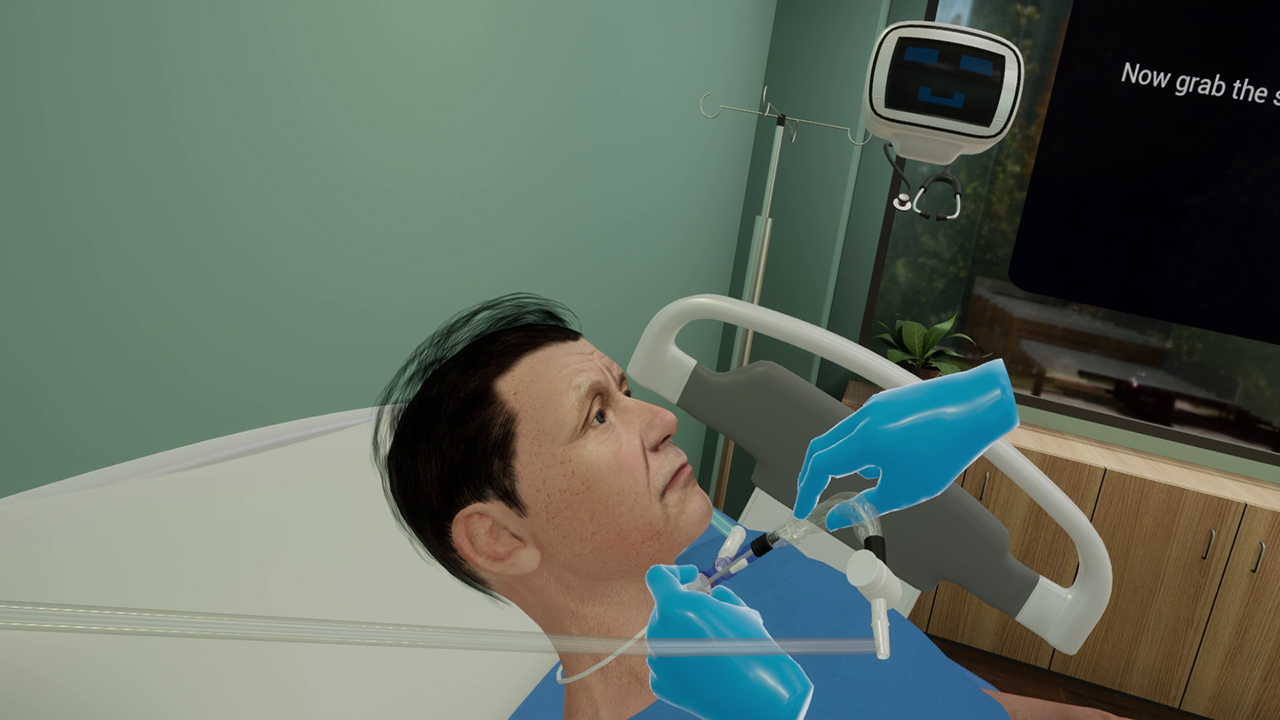
Closed Suctioning
Critical care patients with a tracheostomy tube may require an uninterrupted supply of oxygen. Suctioning is equally important to prevent blockages and maintain efficient breathing. In such an event, the closed suctioning method is used. As part of this module, learners will practice the suctioning procedure using an in-line catheter. Learners will connect the in-line catheter and the ventilator to an adapter thereby maintaining oxygen supply and simultaneously performing suctioning. Adequate affordance coupled with detailed instructions provide thorough and effective practice in the procedure.
Training
With prompts, guidance and affordances learners are hand-held through the process to practice the procedure in a virtual environment with a virtual patient.
- Photorealistic virtual environment
- Physics-based interactions
- Detailed instructions
- Adequate affordances to assist in task completion
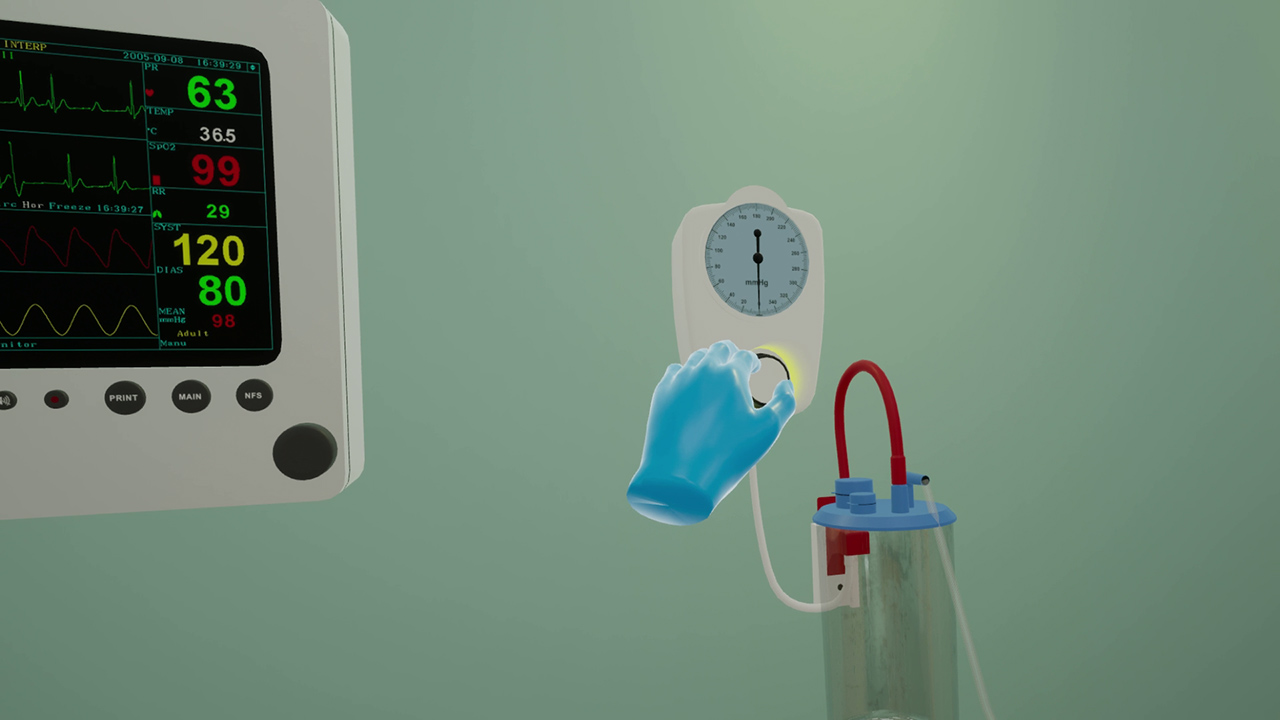
Assessment
Test acquired skills to perform the procedures from start to finish without prompts. An incorrect step will take the learner back to the start to start afresh.
- Live scoring
- Instant feedback
- Adequate affordances for efficient performance
- Time tracking to monitor activity completion
